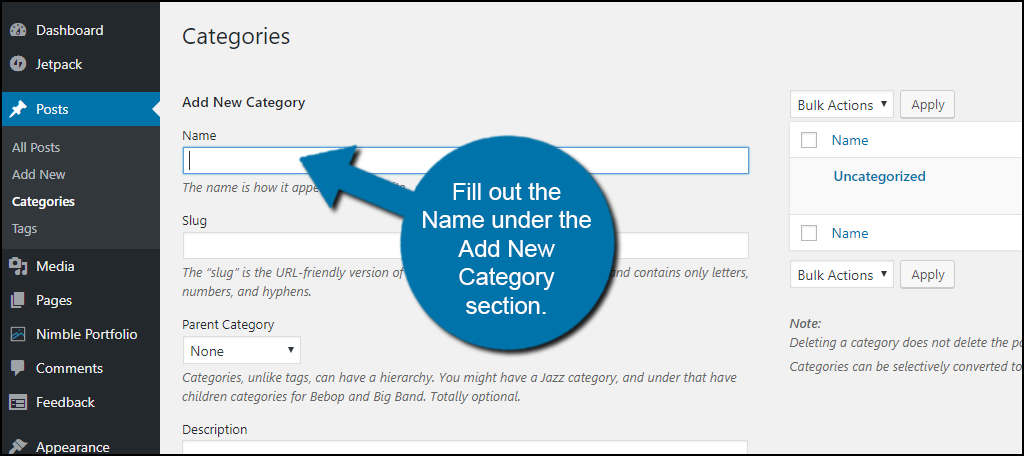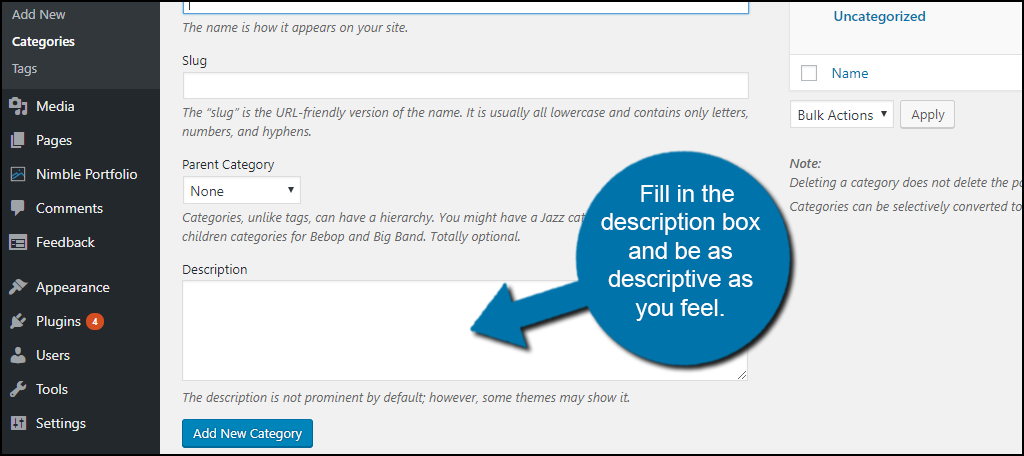Organization is one of the most important components when running any website, especially when you have a lot of varied content on your website. This could include different blog topics, services, and products. Categories allow your visitors to easily navigate your website to quickly and effectively find the content they want. This is also extremely helpful when you are trying to improve your search engine optimization or SEO.
Setting up category descriptions on your WordPress website will allow you to achieve this level of organization and make your website better. These features are natively built into WordPress and are easy to change to meet your websites needs. Today I will demonstrate how you can set up category descriptions on your WordPress website using the built-in tools WordPress offers.
Why Displaying Category Descriptions Can Help Your Website
There are many advantages to displaying WordPress categories descriptions. The most obvious reason is it makes your site more organized. This makes your website look more professional and easier to navigate for visitors. This will also help tremendously when you have a wide selection of content. For example, if you have blogs that feature technology and another set of blogs that feature hardware, it would be extremely helpful if each blog had a category description to help visitors identify the differences. There is a portion of visitors who will click on a website, and if they can’t find what they want in 30 seconds, they will leave the page. Being this organized will help keep these visitors that are short on patience.
The organization that comes with WordPress category descriptions is also very valuable when you want to improve SEO on your website. SEO is crucial because it directly affects the traffic your website will have. SEO allows for search engines like Google and Bing to find and display your websites information. The reason that creating category descriptions helps your SEO is that you don’t need to make a category page. Category pages are seen as duplicate pages by search engine bots and will negatively affect your website SEO. This can all be prevented by displaying category descriptions.
WordPress categories descriptions can also help visitors find the correct product or service easier. For example, if you are a web host and offer multiple packages, it would be really helpful to customers to see properly displayed descriptions for each unique package. This could be the difference between a basic and premium package or the specs of specific products you sell. Regardless of what you are selling, descriptions will prevent confusion among your customers and help them identify the best option for them.
Displaying description categories in WordPress is helpful and easy to do. Today I will be demonstrating how you can add category descriptions using the built-in tools offered by WordPress. This can be done for all pre-existing and future posts on your website. This may take a long time if your website has a lot of content as you will have to manually enter each description.
How to Add Categories Descriptions to Your WordPress Posts
Let’s start by going to Posts on the left-hand admin panel and selecting the Categories option.

This page may appear differently if you have already created categories in the past. For the tutorial, we will pretend you have never used this section of WordPress. Fill out the Name under the Add New Category section.

Next, fill out the Slug name. A slug is URL friendly version of the name. For example, “https://ggexample.com/category/asdfghjklkhgdsd” will be “https://ggexample.com/category/CAT1” if you make the slug “CAT1”. However, it can be made whatever you want.

You can now select your category to be a parent category or a subcategory. For example, you could make a parent category named “Technology” and a subcategory named “Computers,” and you can even make subcategories for subcategories. Be as descriptive as you can be.

You are now ready to add a description. Fill in the description box and be as descriptive as you feel is appropriate for your website. It is important to make this accurate and only list the most important aspects in this section. Visitors do not want to see descriptions that as are long as an article.

Once you have filled in all of the appropriate information and checked for typos, click on the “Add New Category” button to create the category.

You will now see the category you created on the right side. You can repeat these steps as many times as you like to create a wide range of categories with descriptions. This will let you organize your topics more appropriately.

You may already have existing categories, but without a description. This can be easily fixed by clicking the edit option under the category name.

This will pull up the category settings and allow you to add a description and change all other settings. Fill in the description box.

Once you have finished updating the settings, click on the “Update” button. Repeat these steps on as many categories as you have to add a description to each.

The same method can be used for Tags. On the left-hand admin panel select the Tags option. Repeat the previous procedures to create and edit tags. This must also be done for all existing tags that you previously made.

Congratulations, you have successfully added category descriptions as well as tag descriptions. This will allow visitors to better understand what to expect under each category and tag.
Keep Your Website Organized With Category Descriptions
An organized website is sure to help visitors and search engines find and use your website. It is important you be as descriptive as possible, while also being very concise. Remember, it won’t take much to add a description to categories like shoes, pizza, or chairs. The names already have a meaning to the visitor. It is more important to properly describe key features of a series of products or services under one category.
SEO should be the biggest concern when developing a website. It allows for search engines to easily find your website. This will directly affect the volume of traffic your website will see. Overall it is important to use descriptions on your website to prevent confusion and help search engine bots track your website.
Have you noticed being ranked higher on search results since adding category descriptions? Do you think your visitors are less confused because of the category descriptions? Do you use subcategories to add another layer of organization?

best article.